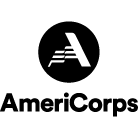Creating impact, one event at a time: Behind the scenes with CYP’s Civic Engagement team
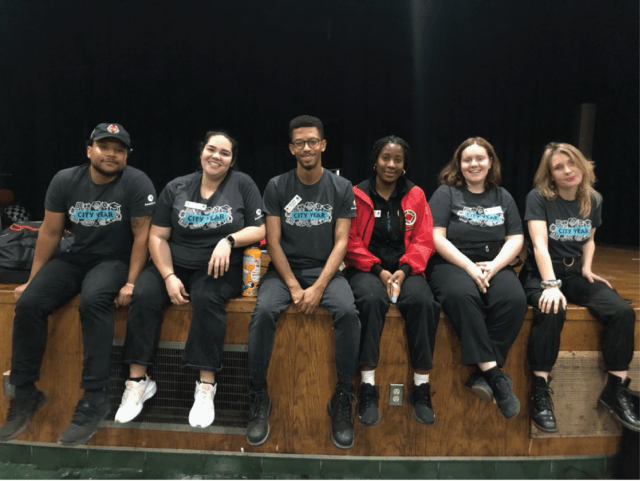
Keimahney Carlisle (pictured fourth, red jacket) writes about her experiences serving on City Year Philadelphia’s 2022-23 Civic Engagement team.
Across the nation, City Year is best known for its mission of educational equity and the service of our AmeriCorps members as Student Success Coaches in schools. So, you might be less familiar with the work of the Civic Engagement (CE) team and its impact within communities around you.
Whether you’ve never heard of the CE team before or are simply interested in learning more about our work, you’re in the right place! Keep reading as I walk you through what the CE team does, what goes into organizing a service event, and my own experiences serving as a Corps member on the CE team with City Year Philadelphia (CYP) last year.
Who is the Civic Engagement team, and why are they important?
The Civic Engagement team plans, prepares and executes large-scale transformational service events throughout the year. These events engage corporate, community and student volunteers in hands-on service supporting City Year partner schools and other neighborhood organizations. The CE team includes AmeriCorps members, known as Project Leaders, who chose to return for a second year of service. Project Leaders develop service projects, help event preparations and lead the service team on event day.
Back when City Year Inc. was founded in Boston in 1988, the organization was originally focused on neighborhood beautification and transformation, centering on the idea that even one person can make a difference. While our service is now primarily school-based, the CE team honors this founding ideal through mobilizing diverse communities to make a tangible impact.
Across the network, CE Teams exist at 8 of the 29 sites we presently serve in, including Philadelphia. It is important to note that each CE team will vary in terms of its roles, responsibilities and operations, adjusting to support the needs of its unique community.
At CYP, the 2022-23 CE team included five Project Leaders. Below describes each of the roles:
-
- Design Coordinator: Implements the vision of a service event through original creation or pulling inspiration from existing partners and resources. This role also leads in the preparation of projects before the event day.
- Operations Coordinator: Buys and manages all CE materials and supplies used for and leading up to event day; collaborates with the Design Coordinator to buy all necessities for each project and keeps inventory throughout the year.
- Logistics Coordinator: Develops strategies and specific documentation for internal volunteers, ensuring event success; serves as the in-kind and advanced logistics point; and develops relationships with vendors and partners to acquire needs for prep and events at low or no cost.
- Volunteer Experience Coordinator: Recruits and maintains communications with all non-corporate sponsors for each event, crafting service days around the volunteer experience; manages a team of AmeriCorps members and City Year staff to facilitate volunteer registration and deployments; collaborates with Service Reserves Coordinator to improve the Net Promoter Score (a standard metric to gauge customer satisfaction) and seeks out volunteer opportunities for CE team.
- Service Reserves Coordinator: Recruits, trains, and manages CYP’s Service Reserves; partners with Design Coordinator and CE Project Manager to facilitate the prep schedule.
My name is Keimahney Carlisle, and I am a proud City Year AmeriCorps member serving with the CYP Civic Engagement team as the Volunteer Experience Coordinator (VEC). I can say, with all honesty, this role has been a delight, both playing to my strengths and pushing me beyond my comfort zone. I’ve gotten to build off the skills I developed as a first-year ACM: relationship building, collaborative leadership, presenting, time-management, while experiencing a different side of what it can mean to serve my community; and gaining new skills and leadership opportunities as a RACM: event planning, volunteer management, Excel and Microsoft Suite overall, and office workplace etiquette. It’s been a year of growth and fun!
CE’s Biggest Event of the Year: MLK Day of Service
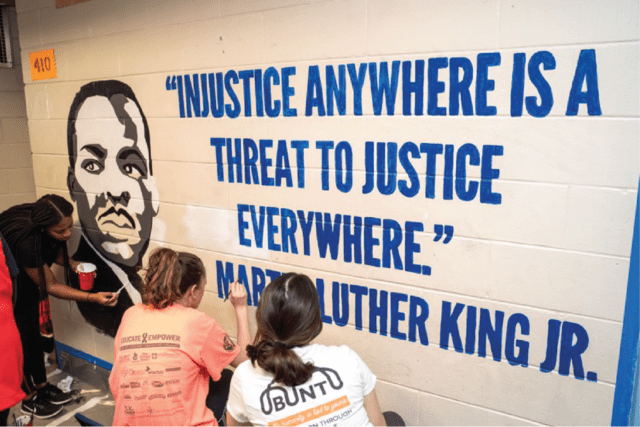
Now that you understand the CE team, let’s dive into what the planning and preparation of an event is like by breaking down our biggest event of the year.
Historically, one of CE’s most recognized and impactful service events is its annual MLK Day of Service. For context, this tradition began to honor the legacy of Dr. King, drawing inspiration from one of his most famous quotes, “Everybody can be great because anybody can serve.” On MLK Day each year, CYP organizes a day of service at one of our partner schools, led by the Civic Engagement team.
What does it look like to plan an event with CE?
Planning most of our service events can be broken down into three phases:
-
- Before, which we call “Prep”
- During, or “Event Day”
- After, the “Wrap Up” phase

What is done within each stage will differ, depending on whose role we zoom into. Overall, CE functions on what we call a Work Plan (pictured above). This plan is an Excel spreadsheet listing in detail the tasks to be done at each stage, who oversees each task, when it must be completed, and a space to add links to documents or notes. This is a foundational tool that guides us throughout the three phases.
Phase 1: Before – “Prep”
What is prep? Short for preparation, prep days are allotted times in which CE readies for a physical day of service. These days run up until event day, are often split in half, and usually involve travel to the partner school site for an in-person event.
(Because of Covid-19, CE ’21 actually had to pivot to a virtual day of service.)
First things first, before getting into prep, we must establish where MLK Day of service will be taking place, or which of our school partners we will be collaborating with. At CYP this is the primary responsibility of the CE Project Manager (PM). The PM tours our partner school sites, meeting with IMs and respective school administration to gain insight into their community and needs.
After many meetings, a school site is selected, and CE shares the good news by scheduling a meet-up with the school-based team and engaging in team building. Because CE spends a great deal of time at the chosen site, intentional time to get to know one another upfront is important.
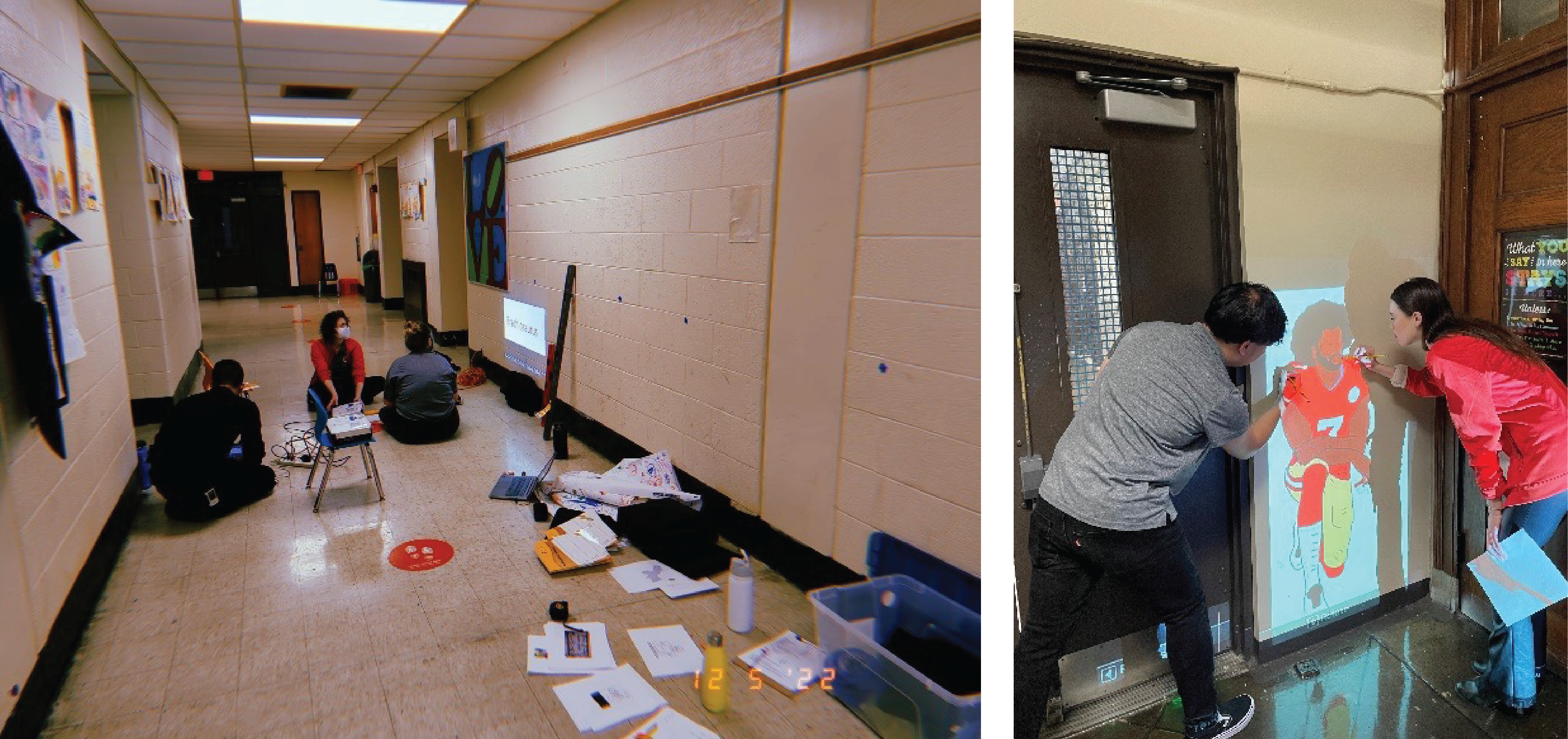
From here, the CE team, Project Manager and all, schedule a sit-down with the school’s administrators. This is often a roundtable setting where we make introductions, explain CE, and the Design Coordinator pitches their constructed vision. Feedback as to whether it’s in alignment with the community (if not, it’s back to the drawing board) is received, and a survey geared towards students and staff to give direct input about their school culture is shared. This meeting establishes our relationship with critical school personnel, refines our vision and kicks off prep.
Earlier, I mentioned prep is split into half days. The first half of our days at CE, typically, are spent in-office tending to the tasks assigned within our Work Plan. So, these are computer-oriented tasks, all devoted to ensuring our participating volunteers, ACMs, staff and even CE feel equipped with all the tools we need. The second half of the day is at the school site.
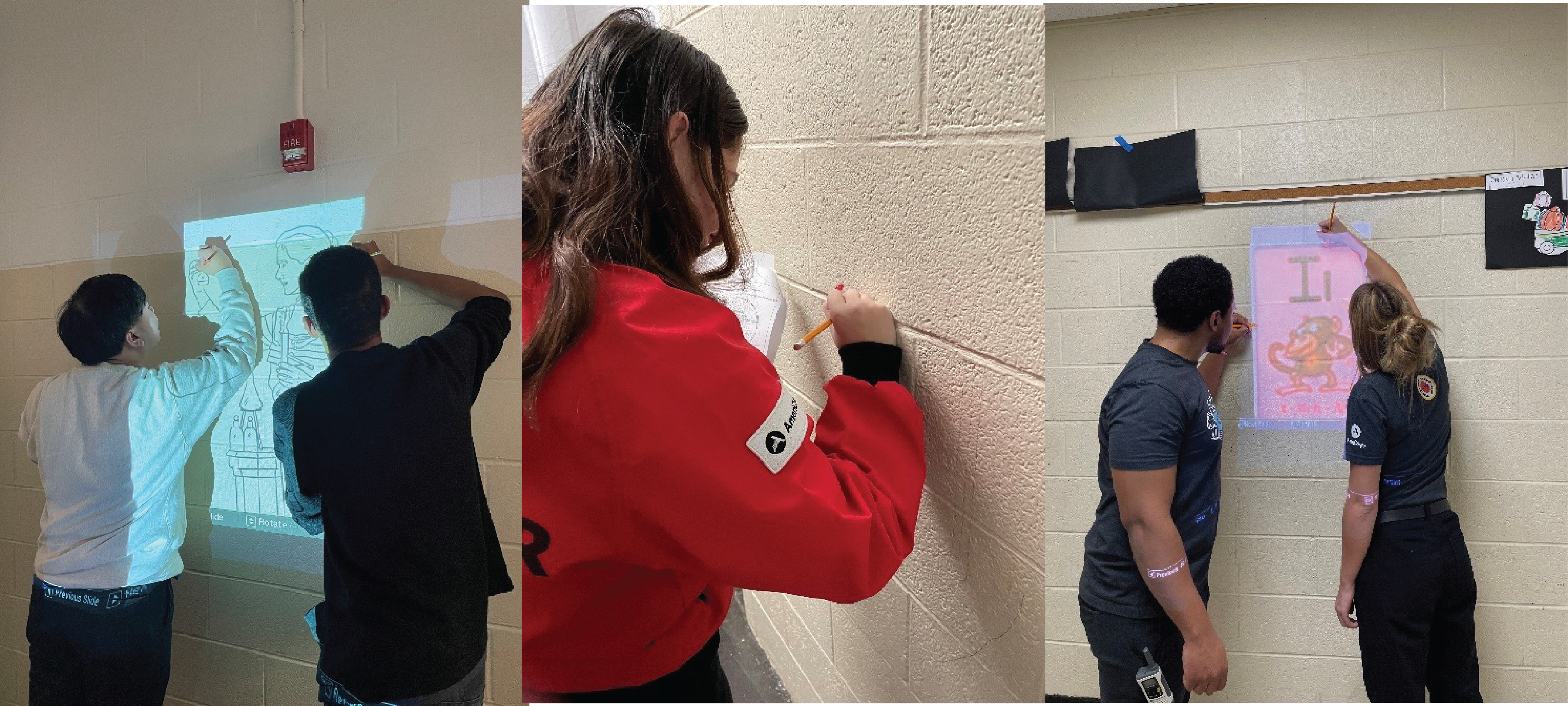
For the first few site visits, CE walks through each space that we might be working in, taking measurements and pictures, getting a lay of the land so that we can effectively navigate the space and provide our best service. The Logistics Coordinator, in collaboration with the Design Coordinator, uses this information to create detailed floor maps with the mural and project placements. Middle to end of prep, our Service Reserves join us in sketching murals onto their designated locations for volunteers to paint the day of the event.
Because there’s much work to be done during prep, CE relies considerably on the help of the entire CYP site. On the Saturday prior to event day, we offer an all-site service opportunity, open to alumni too, to help with prep. During this time, we pour paint for respective projects, tape and tarp areas where painting will happen to minimize potential messes, choose dry stations for finished paintings, continue with sketching and address questions that might come up about the positioning of folx on the day.
About a week before the event day, we were given news that we could no longer sketch directly on the walls, so we pivoted to canvas cloth. This required us to essentially start from the beginning, having to resketch everything already sketched on-site, reevaluate our project list, needs and time. Ultimately, with the support of the Corps and well-planned prep nights from our Service Reserves and Design Coordinators, we were impressively able to get it all done.
Phase 2: During – “Event Day”
Prep is done, we’ve done all we can to get ready for the day, and now it’s here—Event Day! Event Days are long days with early starts and many circles for CE; we typically arrive at least an hour before volunteers to circle and debrief as a team. For MLK Day our start time was 6:00 a.m. sharp at the site. An hour and a half later, we greeted staff and Senior Corps (SCM) with another circle and debrief and repeated this another half hour later with first-year ACMs.
These circles are intentional time in which we pass out all walkies used for communication during the day, printed copies of the documents we worked on during prep: maps, cue-to-cues (internal schedules with a minute-by-minute breakdown of the day) and assigned roles. And folx can ask clarifying questions and give necessary announcements. Once everyone is clued in, it’s go time—everyone disperses to their respective roles and areas, and doors open to volunteers which begins registration.
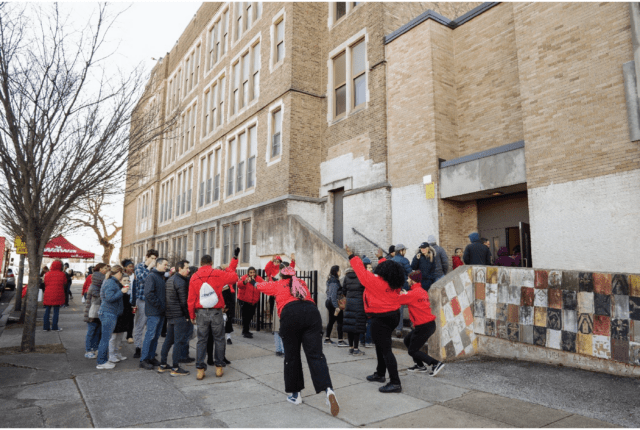
Since my role involves the Volunteer Experience, I lead registration. This is where volunteers are signed in, given their project number and location, and directed to the opening program where CYP’s Executive Director Darryl Bundrige, the Principal of the school site, and our Program Manager Amanda Santiago deliver remarks around the importance of the day and insight on the community we’re serving.
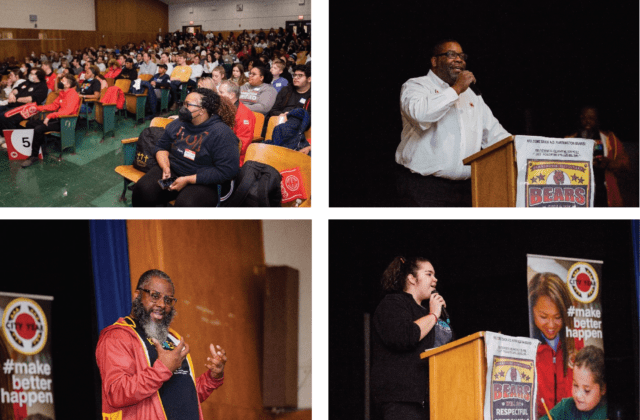
While volunteers take part in the opening program, CYP staff and Corps are working the event as human arrows, greeters, Area Coordinators (typically staff) and Project Coordinators (typically SCMs), Paint Captains and Tools Support. CE serves as point persons for our various project areas.
After the opening program volunteers head to their project locations where they are led by PCs. Our PCs are our ACMs, and so in these spaces, our volunteers get to learn more about the work we do within City Year.
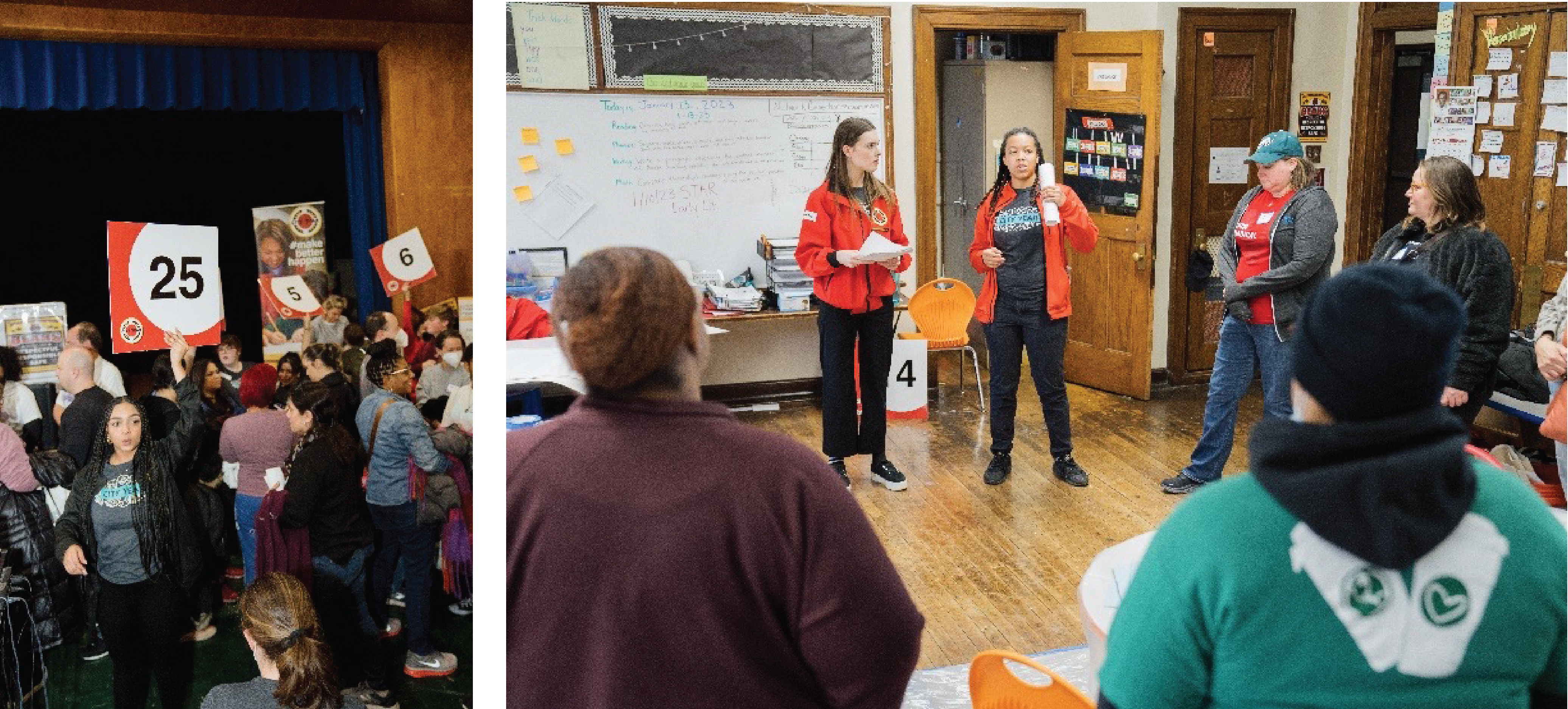
As folx are completing their projects, there are assigned checkpoints to gauge progress. Here, PCs check in with ACs, and ACs check in with CE points on what has been completed and what has yet to be done. After two hours of service, we begin rotational lunches by floor (three floors, three lunch periods). At this time, CE checks in with our PM and gives progress updates for our areas.

From here, service continues for another two hours. Some volunteers exit for the day, some volunteers are redeployed to other projects, and some return to their first assignment. Close to end time, our PCs pause our volunteers and ask for surveys to be completed. A light clean-up begins and once done, volunteers are dismissed for the day.
With volunteers done, things shift a bit role-wise. CE now becomes PCs, and all Corps become volunteers, so-to-speak. The intention is to finish as much as we can of whatever remains. Things move similarly as before where “volunteers” continue with projects, then we have a stopping point for clean-up. Clean-up includes removing all tape and tarp, combining all tools, paint and into our designated materials room, and placing all murals at dry stations.
Clean-up is a wrap. Now we final circle and typically do a walkthrough, viewing all that was completed, then corps and staff are dismissed. CE stays longer to ensure any loose ends are tied, then we finally head home for the day around 6:00 p.m.
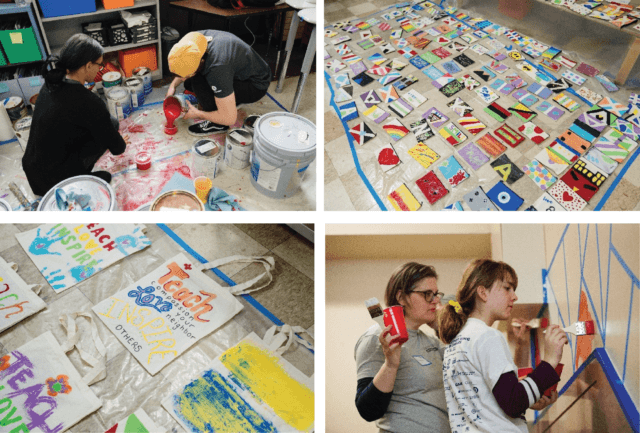
Volunteers sketched 45 murals, painted 150 murals, painted and packed 50 canvas tote bags for teachers, created 400 exam study kits and filled 400 pencil cases with goodies for students.
Phase 3: After – “Wrap Up”
The completion of MLK Day of Service felt fulfilling, that all the hard work and effort we put in as a team paid off. Hearing volunteers’ positive feedback in real time and considering, too, that a week before the entire project had shifted for us—it felt like a job well-done.
After an event, the next day clean-up continues. This is handled similarly to an event day, in that the logistics coordinators draw up a cue-to-cue detailing the time breakdown and movement of the day. What it looks like is CE renting a U-Haul, traveling to the school site, and filling the U-Haul with all our materials to bring back to the inventory in our office. We made three round trips until completion.
Operations Coordinator takes the lead in this space, instructing the team on all that needs to be done, restocking, recounting, updating logs and reorganizing. Simultaneously, as Volunteer Operations Coordinator, I manually merge all survey feedback into an excel sheet to be used for the After Action Report (AAR). The AAR is an easy-to-follow overview of the concluded event, intended for various stakeholders like our partners, sponsors and the CYP site.
Thank You emails are sent to volunteers, and the team continues to finish projects. This time around, this looked like days of finishing murals, going through created kits, and counting them to confirm our total number. Amid completion of projects, we schedule time for a debrief space, where we discuss roses, thorns, learning moments and thoughts for improvement.
The debrief, for me, is a space that signals the true completion of an event because we share thoughts and feelings about the entire process at an individual level, team level, and within the overall program.
Being on CE and planning this year’s MLK Day of Service will forever be one of the most challenging and rewarding things I’ve had the pleasure of experiencing in my life. Getting to see the power of team in action with how diligently the CE team worked, and how significantly supportive staff and corps were in successful completion, was beautiful. The importance of flexibility, quick problem solving and the power of coming together for a unified goal—serving our students and community—is more deeply rooted as a value for me.
By sharing my experience serving on CE ’23, I hope that the entire network, staff and Corps will gain greater insight and appreciation for the work we all get done together! Stay tuned for announcements on future City Year Philadelphia events.
Are you considering a year of service, or do you know someone who is? City Year Philly is currently hiring full-time tutors and mentors for the 2024-2025 school year. Start your journey today!
Related stories
Student Success Coach Riya Sembhi (pictured front row, right, with her Sullivan Elementary team) shares her experiences serving a gap...
Read more about My Gap Year with City Year PhiladelphiaLeft: Hanna during her time serving as a City Year Philadelphia AmeriCorps member, 2019-2020. Right: Hanna in her current role...
Read more about Alumni Spotlight: Hanna Kim (‘20), Community Schools Volunteer Coordinator, City of PhiladelphiaPhiladelphia City Council President Kenyatta Johnson (pictured center, gray suit) is joined by leaders of local youth-serving organizations—including CYP Executive...
Read more about Spotlight on Kenyatta Johnson, City Year Philly’s 2024 Idealist of the YearDid you know that many alumni of Historically Black Colleges and Universities, known as HBCUs, apply to serve with City...
Read more about Diversity, leadership and community: reflections of an HBCU alum
